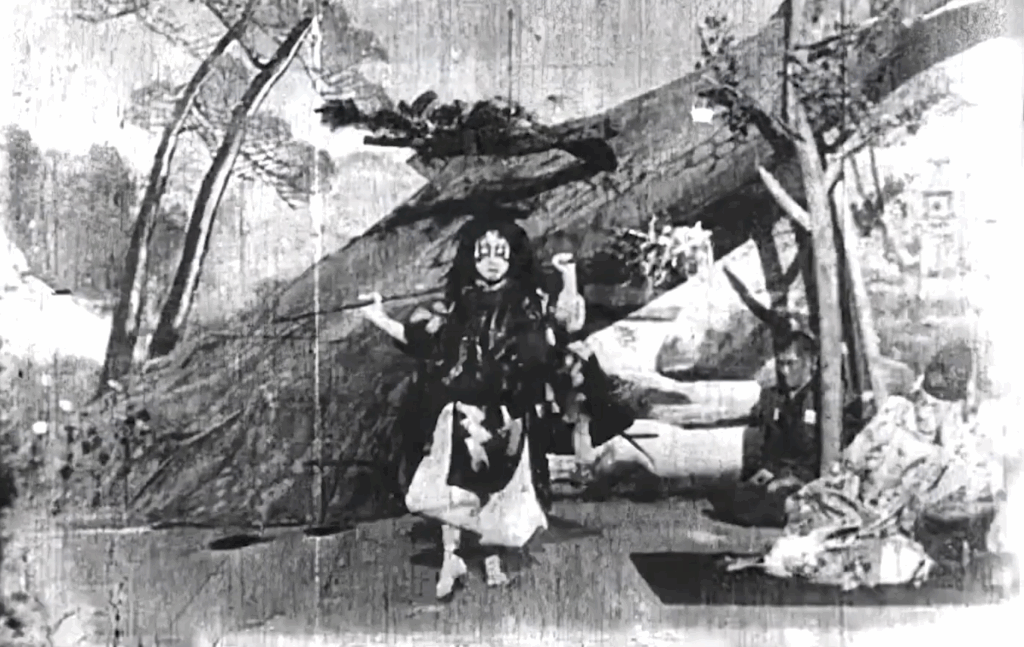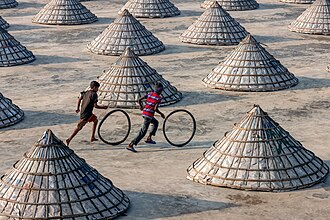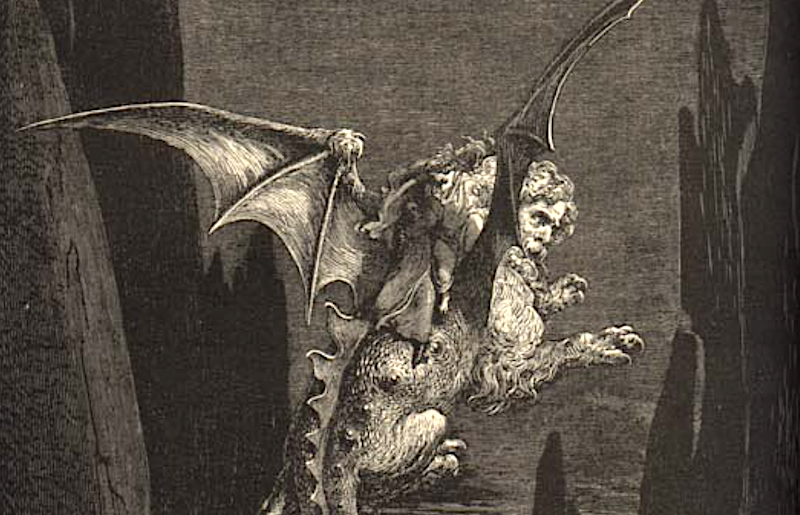Watch Momijigari, Japan’s Oldest Surviving Film (1899)
At first, film simply recorded events: a man walking across a garden, workers leaving a factory, a train pulling into a station. The medium soon matured enough to accommodate drama, which for early filmmakers meant simply shooting what amounted to stage productions from the perspective of a viewer in the audience. At that stage, we could say, film still hadn’t evolved past simple documentary purposes, having yet to incorporate editing, to say nothing of the other qualities we now regard as characteristically cinematic. This wasn’t a cultural matter, but a technical one, as evidenced by Momijigari, the oldest Japanese film in existence.
Shot in 1899, Momijigari depicts nearly four minutes of a kabuki play involving Onoe Kikugorō V and Ichikawa Danjūrō IX, two famous masters of the form at the time. The idea was to preserve a record of their presence on stage, no matter how haphazardly or for how short a time, before they shuffled off this mortal coil.
It certainly wasn’t too soon: both men would die in 1903, the year of the film’s first exhibition. No fan of Western modernity, Danjūrō had stipulated that it be shown only after his death, but in the event, it was screened for the public in his place at a performance at which he was too sick to appear, which extended to a longer run in honor of Kikugorō’s recent death.
Like its Western historical equivalents, Momijigari depicts a theatrical work. The titular sixteenth-century Noh play, also performed in kabuki and dance-oriented shosagoto versions, involves a woman and her retinue on an outing to do some maple-leaf viewing (the literal meaning of momijigari). Like all female kabuki roles, these would have been played without exception by male actors, who were in any case thought better able to convey femininity onstage. The lady entices a passing warrior to drink, and when he passes out, he’s informed in his dream that she’s actually a demon. In the following scene, she reverts to demon form and the two do battle. Pioneering Japanese filmmaker Shibata Tsunekichi fits a surprising amount of this narrative into a very brief runtime, which also includes the wholly accidental loss of a fan. Danjūrō had insisted on shooting outside, even on a windy day, and one doesn’t simply say no to a kabuki master.
Related content:
Watch the Oldest Japanese Anime Film, Jun’ichi Kōuchi’s The Dull Sword (1917)
Essential Japanese Cinema: A Journey Through 50 of Japan’s Beautiful, Often Bizarre Films
Hand-Colored 1860s Photographs Reveal the Last Days of Samurai Japan
Watch Vintage Footage of Tokyo, Circa 1910, Get Brought to Life with Artificial Intelligence
Based in Seoul, Colin Marshall writes and broadcasts on cities, language, and culture. His projects include the Substack newsletter Books on Cities and the book The Stateless City: a Walk through 21st-Century Los Angeles. Follow him on the social network formerly known as Twitter at @colinmarshall.









Leave a Reply